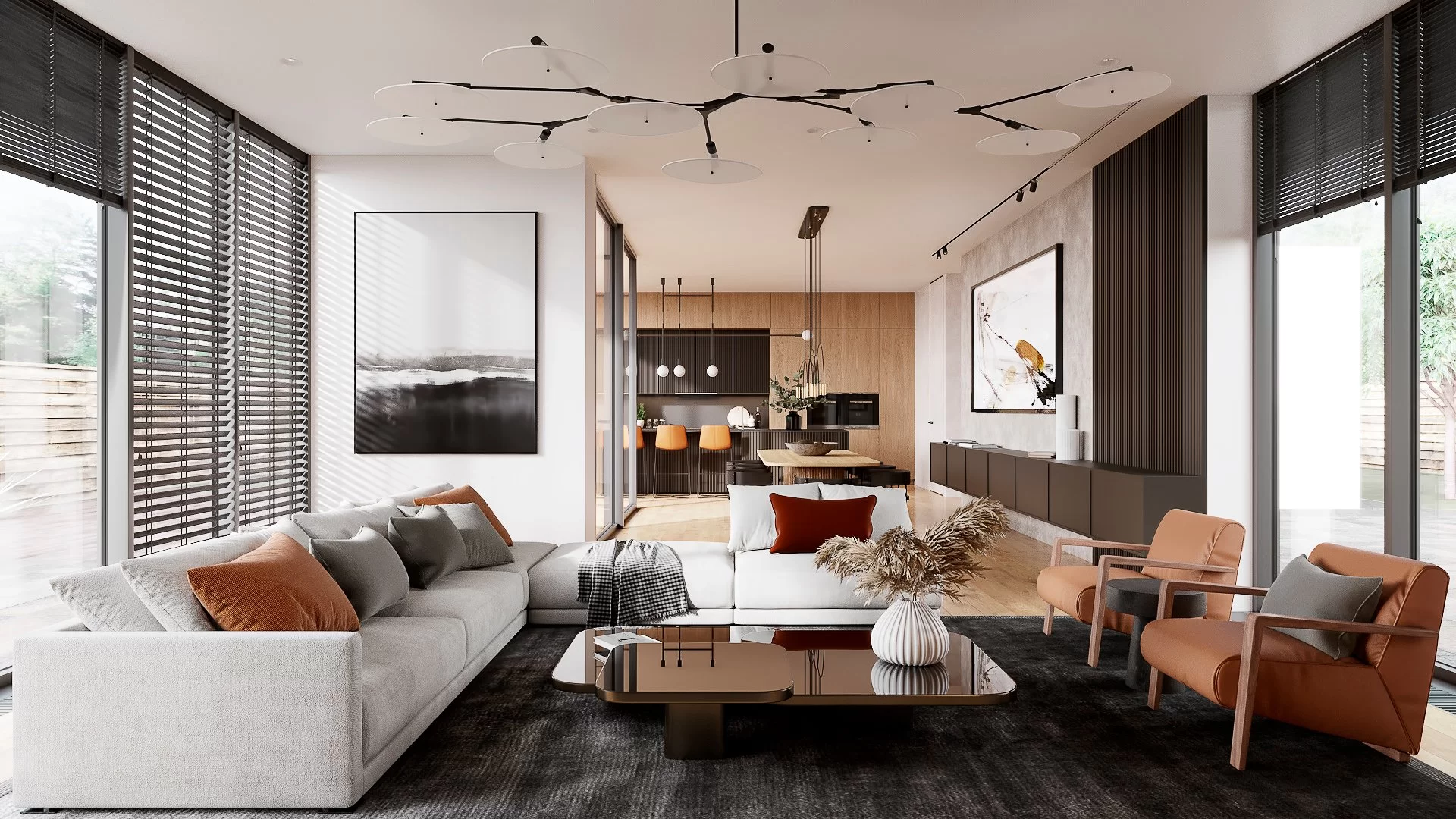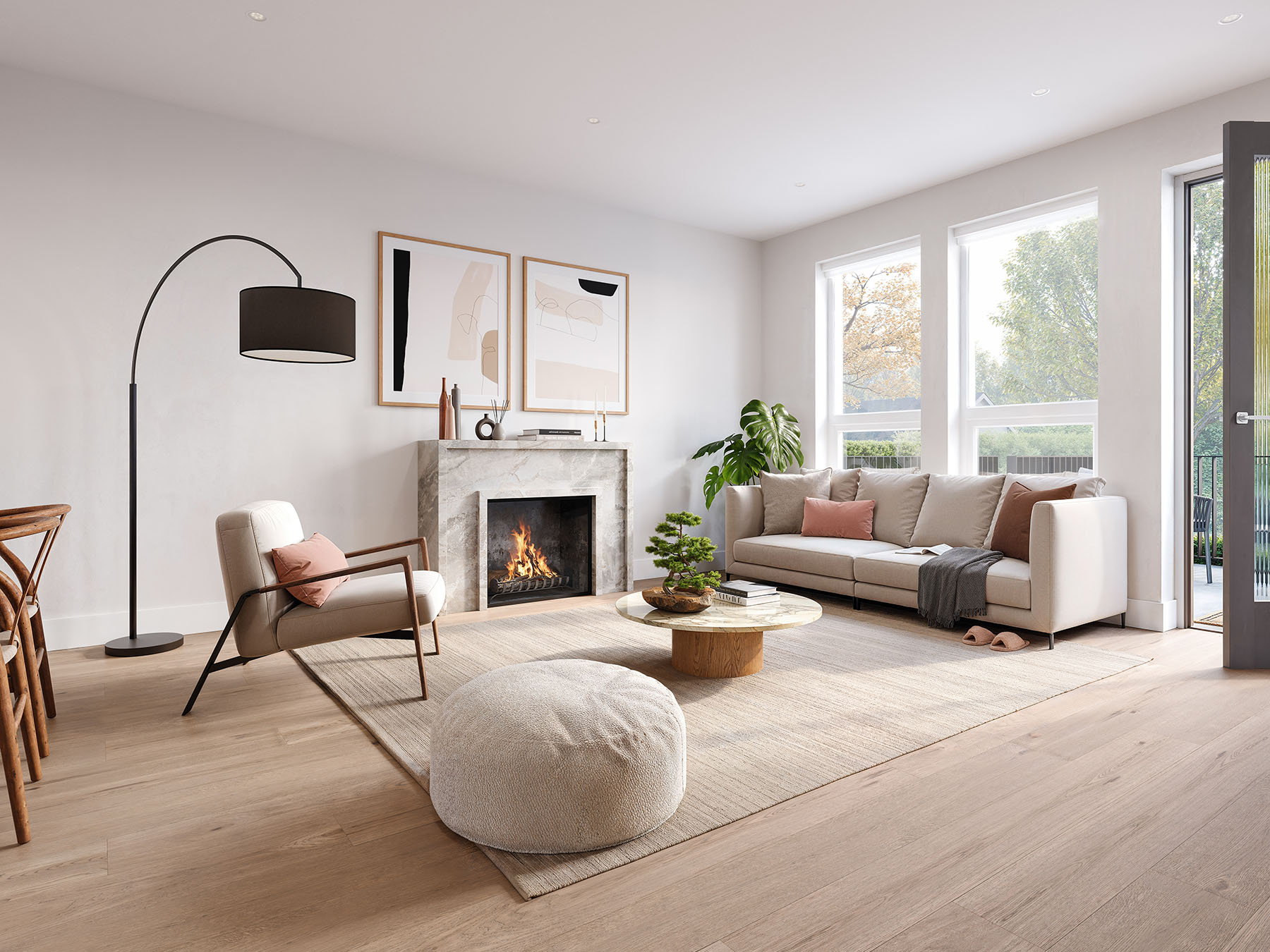Interior Design Styles

Interior design rendering – The realm of interior design encompasses a myriad of styles, each imbued with its own distinct character and aesthetic appeal. From the sleek lines of modernism to the opulent grandeur of traditionalism, these styles offer a kaleidoscope of options for discerning homeowners seeking to transform their living spaces into expressions of their individuality.
Understanding the key characteristics, elements, and color palettes associated with each style is paramount to creating a cohesive and harmonious design plan. By blending elements from different styles or embracing a single aesthetic, homeowners can craft spaces that reflect their tastes, lifestyles, and aspirations.
Interior design rendering is an art form that combines technical precision with creativity. Designers use specialized software to create realistic 3D models of interior spaces, allowing clients to visualize their design ideas before they’re implemented. To enhance these renderings, designers often incorporate stock wallpapers that provide a wide range of textures, patterns, and colors.
By seamlessly integrating stock wallpapers into their renderings, designers can create visually stunning and immersive experiences that accurately represent the desired aesthetic of the interior space.
Modern
Modern interior design is characterized by its clean lines, geometric shapes, and neutral color palettes. It emphasizes functionality and simplicity, creating spaces that are both aesthetically pleasing and conducive to everyday living.
The beauty of interior design rendering lies in its ability to bring your dream space to life. With a few clicks, you can explore different design options, materials, and furniture arrangements. And if you’re looking for professional assistance, you can easily find interior design services near me to help you create the perfect space.
Interior design rendering is an invaluable tool that allows you to visualize and refine your design ideas before making any costly mistakes.
Key elements of modern design include:
- Straight lines and sharp angles
- Open floor plans
- Neutral colors such as white, black, and gray
- Minimalist furniture with clean lines
- Natural materials such as wood, metal, and glass
Traditional
Traditional interior design evokes a sense of timeless elegance and sophistication. It is characterized by ornate details, rich fabrics, and warm color palettes. Traditional designs often draw inspiration from historical periods, such as the Victorian era or the Renaissance.
Key elements of traditional design include:
- Curved lines and intricate details
- Symmetrical arrangements
- Warm colors such as gold, red, and green
- Upholstered furniture with ornate carvings
- Antique or reproduction furniture
Scandinavian
Scandinavian interior design is known for its simplicity, functionality, and emphasis on natural light. It is inspired by the Nordic countries, where long winters and limited daylight have shaped a design aesthetic that prioritizes coziness and comfort.
Key elements of Scandinavian design include:
- Clean lines and simple shapes
- Neutral colors such as white, gray, and beige
- Natural materials such as wood, leather, and wool
- Cozy textiles and throws
- Large windows to maximize natural light
Color Theory and Application

Color theory is a body of practical guidance to color mixing and the visual effects of a specific color or color combination. By understanding these basic principles, you can make informed decisions about the colors you use in your interior design projects.
The color wheel is a visual representation of the relationships between colors. It is divided into 12 sections, each representing a different hue. The primary colors are red, yellow, and blue. These colors cannot be created by mixing other colors. The secondary colors are green, orange, and purple. These colors are created by mixing two primary colors. The tertiary colors are created by mixing a primary color with a secondary color.
Complementary colors are colors that are opposite each other on the color wheel. When placed next to each other, they create a high contrast effect. Analogous colors are colors that are adjacent to each other on the color wheel. When placed next to each other, they create a harmonious effect.
The colors you choose for your interior design project will have a significant impact on the overall mood and atmosphere of the space. Warm colors, such as red, orange, and yellow, are energizing and inviting. Cool colors, such as blue, green, and purple, are calming and relaxing.
You can also use color to enhance spatial perception. Light colors make a space feel larger, while dark colors make a space feel smaller. You can use color to create focal points in a room. By using a bright color on one wall, you can draw attention to that area.
Color theory is a powerful tool that can be used to create beautiful and functional interior design projects. By understanding the basics of color theory, you can make informed decisions about the colors you use in your home.
Choosing Colors That Evoke Specific Moods and Create Desired Atmospheres
The colors you choose for your interior design project will have a significant impact on the overall mood and atmosphere of the space. Here are some general guidelines to help you choose colors that evoke specific moods:
* Warm colors, such as red, orange, and yellow, are energizing and inviting. They are a good choice for spaces where you want to create a lively and upbeat atmosphere, such as a living room or kitchen.
* Cool colors, such as blue, green, and purple, are calming and relaxing. They are a good choice for spaces where you want to create a peaceful and serene atmosphere, such as a bedroom or bathroom.
* Neutral colors, such as white, black, and gray, can be used to create a variety of moods, depending on how they are used. White is a versatile color that can be used to create a bright and airy space or a more formal and elegant space. Black is a dramatic color that can be used to create a sophisticated and stylish space. Gray is a versatile color that can be used to create a warm and inviting space or a more cool and contemporary space.
When choosing colors for your interior design project, it is important to consider the overall style of the space. For example, if you are designing a traditional space, you may want to choose colors that are muted and elegant. If you are designing a contemporary space, you may want to choose colors that are bright and bold.
It is also important to consider the function of the space when choosing colors. For example, if you are designing a kitchen, you may want to choose colors that are easy to clean and maintain. If you are designing a bedroom, you may want to choose colors that are calming and relaxing.
By following these guidelines, you can choose colors that will create the desired mood and atmosphere for your interior design project.
Using Color to Enhance Spatial Perception and Create Focal Points
You can also use color to enhance spatial perception and create focal points in a room. Here are some tips:
* Use light colors to make a space feel larger. Light colors reflect light, which makes a space feel more open and airy.
* Use dark colors to make a space feel smaller. Dark colors absorb light, which makes a space feel more intimate and cozy.
* Use color to create focal points. By using a bright color on one wall, you can draw attention to that area. This is a great way to create a focal point in a room.
By following these tips, you can use color to create the desired spatial perception and focal points in your interior design project.
Lighting Techniques: Interior Design Rendering

Lighting is a crucial element in interior design, capable of transforming the ambiance and functionality of a space. Understanding the different types of lighting and their effects empowers designers to create effective lighting schemes that enhance visibility, create drama, and highlight architectural features.
Lighting can be broadly classified into two categories: natural and artificial.
Natural Lighting, Interior design rendering
Natural lighting refers to the light emanating from the sun. It is the most desirable form of lighting, as it provides ample illumination, reduces eye strain, and boosts mood. Designers strive to maximize natural light in interiors through windows, skylights, and other openings.
Artificial Lighting
Artificial lighting is used to supplement natural light or provide illumination in spaces where natural light is insufficient. It encompasses a wide range of fixtures and sources, each with its unique characteristics and applications.
Types of Artificial Lighting
- Ambient lighting: Provides general illumination throughout a space, creating a sense of overall brightness. It can be achieved through ceiling fixtures, recessed lighting, or wall-mounted sconces.
- Task lighting: Focuses on specific areas where tasks are performed, such as reading, cooking, or working. It includes desk lamps, under-cabinet lighting, and pendant lights.
- Accent lighting: Highlights specific objects or architectural features, creating visual interest and drama. It can be achieved through spotlights, picture lights, or cove lighting.
The effective use of lighting requires careful consideration of the following factors:
- Intensity: The amount of light emitted, measured in lumens.
- Color temperature: The warmth or coolness of light, measured in Kelvin (K). Warmer light creates a cozy atmosphere, while cooler light enhances visibility.
- Distribution: The pattern in which light is spread, affecting the overall ambiance and visibility.
By understanding these principles, designers can create lighting schemes that enhance the functionality and aesthetic appeal of interior spaces.